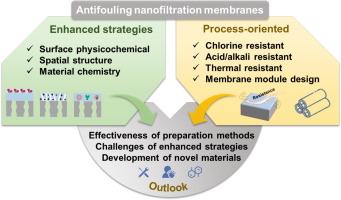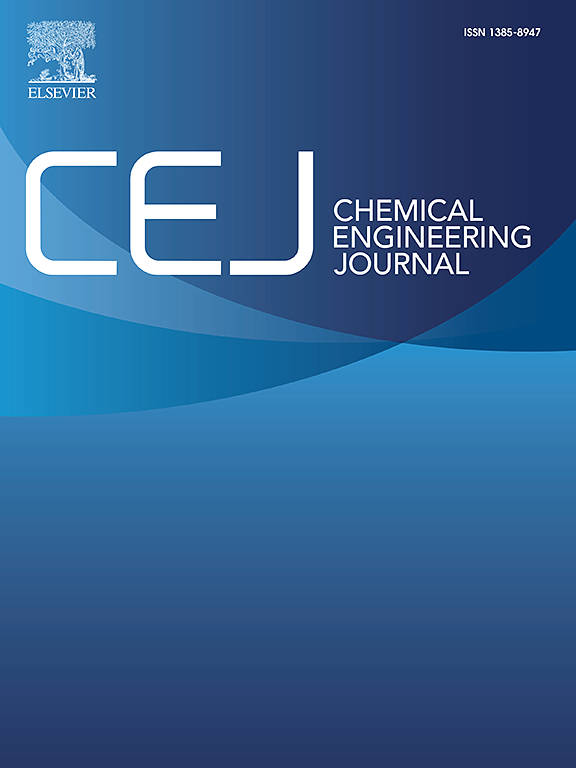Strengthening nanofiltration membrane: Strategies for enhanced antifouling performance
IF 13.3
1区 工程技术
Q1 ENGINEERING, CHEMICAL
引用次数: 0
Abstract
Nanofiltration (NF) membranes, characterized by intermediate pore sizes and operating pressures between ultrafiltration and reverse osmosis, are increasingly gaining attention for applications in water treatment and ion/molecule separation. However, membrane fouling remains a significant challenge, impacting membrane performance and longevity. In this review, we first provide an overview of the characteristics of fouling occurrence, fouling types, and cleaning methods for NF membranes, with a focus on the demands these behaviors impose on membrane properties and materials during the development of antifouling membranes. Next, we summarize recent advances in the fabrication methods of antifouling NF membranes, highlighting techniques such as interfacial polymerization (IP), surface grafting, surface coating, and layer-by-layer self-assembly. Due to the scalability, customization potential, and broad applicability, IP is considered the most promising method for fabricating antifouling NF membranes. Third, the strategies for enhancing the antifouling performance of NF membranes prepared by IP are discussed in terms of regulating the membrane surface properties, spatial structure, and material chemistry, and the challenges that still need to be faced by each strategy are pointed out. Subsequently, recent advances in process-oriented antifouling enhancement for NF membranes are reviewed. Finally, we conclude that with advancements in fabrication methods and material science, further improvements in the preparation and application of antifouling NF membranes are highly promising. This review provides direction and guidance for the further development and industrialization of antifouling NF membrane technologies.

求助全文
约1分钟内获得全文
求助全文
来源期刊

Chemical Engineering Journal
工程技术-工程:化工
CiteScore
21.70
自引率
9.30%
发文量
6781
审稿时长
2.4 months
期刊介绍:
The Chemical Engineering Journal is an international research journal that invites contributions of original and novel fundamental research. It aims to provide an international platform for presenting original fundamental research, interpretative reviews, and discussions on new developments in chemical engineering. The journal welcomes papers that describe novel theory and its practical application, as well as those that demonstrate the transfer of techniques from other disciplines. It also welcomes reports on carefully conducted experimental work that is soundly interpreted. The main focus of the journal is on original and rigorous research results that have broad significance. The Catalysis section within the Chemical Engineering Journal focuses specifically on Experimental and Theoretical studies in the fields of heterogeneous catalysis, molecular catalysis, and biocatalysis. These studies have industrial impact on various sectors such as chemicals, energy, materials, foods, healthcare, and environmental protection.
 求助内容:
求助内容: 应助结果提醒方式:
应助结果提醒方式:


